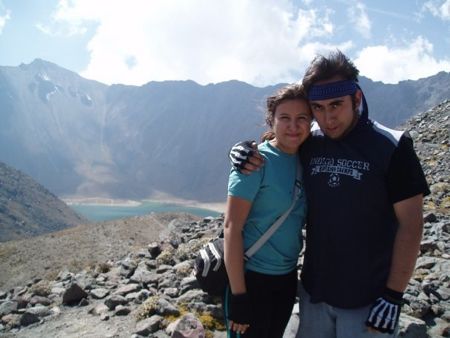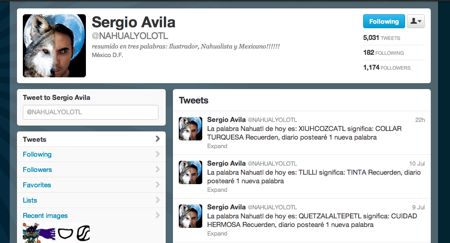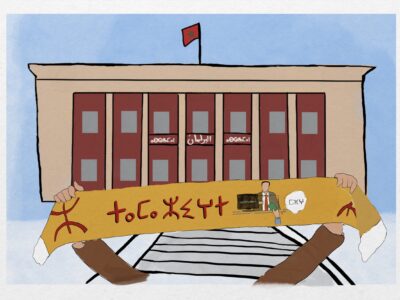Nahuatl, known as “Mexicano” by many of its speakers, is the most widely spoken indigenous language in Mexico. It was the lingua franca of the Aztec empire and is currently one of Mexico’s official languages. It belongs to the Uto-Aztecan language family, which spread from the United States Southwest to Central America. In fact, it is theorized that Nicaragua’s etymology comes from the Nahuatl words “Nican ca Anahuac,” which roughly translates to “here is Anahauc” denoting the geographical limits of the Aztec empire. There are currently several regional varieties of Nahuatl, including one still spoken in El Salvador. All in all, today the language boasts over 1.5 million native speakers.
Nahuatl is an agglutinative language and is rich in morphology. Its classical form was highly metaphorical and poetic in style. Some of the literary treasures studied in depth by scholars are the poems of Nezahualcoyotl (“coyote in fast”) and the Huehuetlahtolli (literally “the ancient word”), which is an ancient collection of sayings, exhortations, and the traditional wisdom of the culture which helped preserve and pass down family values and ideals to generations—until the Spanish invasion.
The good news is that despite the imposition of Spanish and trends showing a slight decline in the number of Nahuatl monolinguals, there has recently been a growing interest in Nahuatl. Aided by a movement of cultural revival, specifically in many areas of the United States, Nahuatl’s resilience is in part due to the cultural consciousness and commitment of the new generation of Mexicans.
Sergio Avila (@NAHUALYOLOTL) is part of that generation who are working to keep the language alive. Using social media he strives to preserve the language and teach the rich history and culture of his ancestors. He has primarily been using his Twitter account, which has more than 1,000 followers to post a Nahuatl “Word of the Day” as a way to teach and to interact with other up and coming learners of this indigenous language. He also is an administrator of the Nahuatl Facebook Page. Here is a short interview with Sergio conducted in the Nahuatl language:
Rising Voices: Tell us about yourself.
Sergio Avila:
Notoca Sergio, ompa Mexihco Tenochtitlan nichanti. Ce pohualli ihuan chicoace xihuitl nicpia. Nitlacuilo ihuan ompa “Twitter” ihuan “Facebook” nitemachtia nochin cemilhuitl in Nahuatlahtolli.

Photo courtesy Sergio Avila
RV: How long have you been studying Nahuatl? How did you become interested in the language and how did you learn it?
SA:
Ome xihuitl nahuatlahtolli onicmomaxtic. Ihcuac onimomatic ¿Tleica in mexihcatlaca titlahtoah caxtillantlahtolli intla tehuan ahmo caxtillantlaca?.
Ompa “Tepeticpac Tlahtolcalli, ce telpochcalli.
RV: How do you use social media for language preservation? What kind of response are you seeing from your followers on Twitter and Facebook?
SA:
Nochin cemilhuitl ce nahuatlahtolli nitlacuiloa ompa “twitter” ihuan “facebook”. In tlacah quinpactiah notequiuh miec, inon nechpactia miec. In tlacah nechtlacuiloa “pahpaquiliztli” ihuan “miec tlazohcamati”.

RV: Give us an example or two of a “Nahuatl Word of the Day” (#palabranahuatl)
SA:
1. Nahualyolotl: Corazón de Nahual (Nahual es el ser que se reboza bajo la piel de otro, así como parte de nuestra alma fuera de nuestro cuerpo, parecido a un “animal totémico” propio) #palabranahuatl
2. Chicahualiztli: Fuerza (física) #palabranahuatl
2. Chicahualiztli: Strength (physical)
RV: In your opinion, what is the future of the Nahuatl language?
SA:
Nicneltoca intla cachi tlacah in nahualthtolli quimatizque (tlen inon notequiuh), yehuan quiihtazque iquetzalcayo ihuan in nahuatlhtolli nochipa nemiz.




3 comments